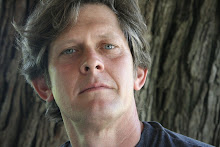




This week's newspaper column.
This past Earth Day, I led an effort to build a pine straw dog house clad with native clay complete with green roof dubbed Eco-Fido. The inspiration came from a little-known but rapidly-growing building technique: strawbale construction.
A truly American invention, this natural way of building dates back to the nineteenth century when European migrants settling in the Midwest utilized abundant baled wheat straw in lieu of lumber to construct homes.
As the green movement grows, strawbale construction is more popular than ever with new structures popping up throughout the country. (Insert your joke about the Big Bad Wolf here).
Strawbales can be used as infill insulation in a wood-framed building or as a replacement for the framing itself. Although building codes in many jurisdictions do not yet recognize strawbales as a structural material - California being a notable exception – it’s proving to be quite adequate for small to medium sized residential construction. Some homes built over a century ago are still standing nicely resisting strong winds, pests, and inclement weather. Strawbale homes have shown to fare well in earthquakes as well.
The basic system consists of stacking wheat or rice straw bales in a brick-like fashion reinforced by steel, bamboo, or rope ties, and coated with stucco or earthen clay inside and out.
Strawbale construction roughly triples the insulation value, and as a natural substance, there’s no out gassing of toxic fumes as is common with conventional materials. The owner of a strawbale home I designed in Wisconsin boasts that his home is so quiet he’d never know he was near a road if he didn’t occasionally look out the front window to see cars passing.
Encapsulated tightly packed straw does not contain enough oxygen to be a fire hazard; strawbale walls hold up more than twice as long as conventional walls in recent laboratory fire testing.
What about humidity? Strawbale walls seem to retain their integrity in wetter climates as well.
In the 1930’s, inventor and physician William Burritt built a strawable mansion on top of a mountain in Huntsville, Alabama. Legend has it that he once took rest in a roadside barn and noticed how much cooler the interior was in relation to typical homes of the day so he decided to emulate the stacked bales of straw he noticed in the barn. Today, that home serves as Huntsville’s city museum.
Strawbale construction is decidedly democratic in that the simplicity of the process and the manageable weight of the materials invites the participation of novices alongside professionals; it’s not uncommon to see petite women trimming and stacking bales and even children like to get into the act spreading plaster or mud.
And that pine straw and mud dog house? I built the frame, but Headstart students, ages 3-5, helped in mixing the mud (by squishing it with bare feet) and assisted in applying the wet clay with eager little hands.





No comments:
Post a Comment